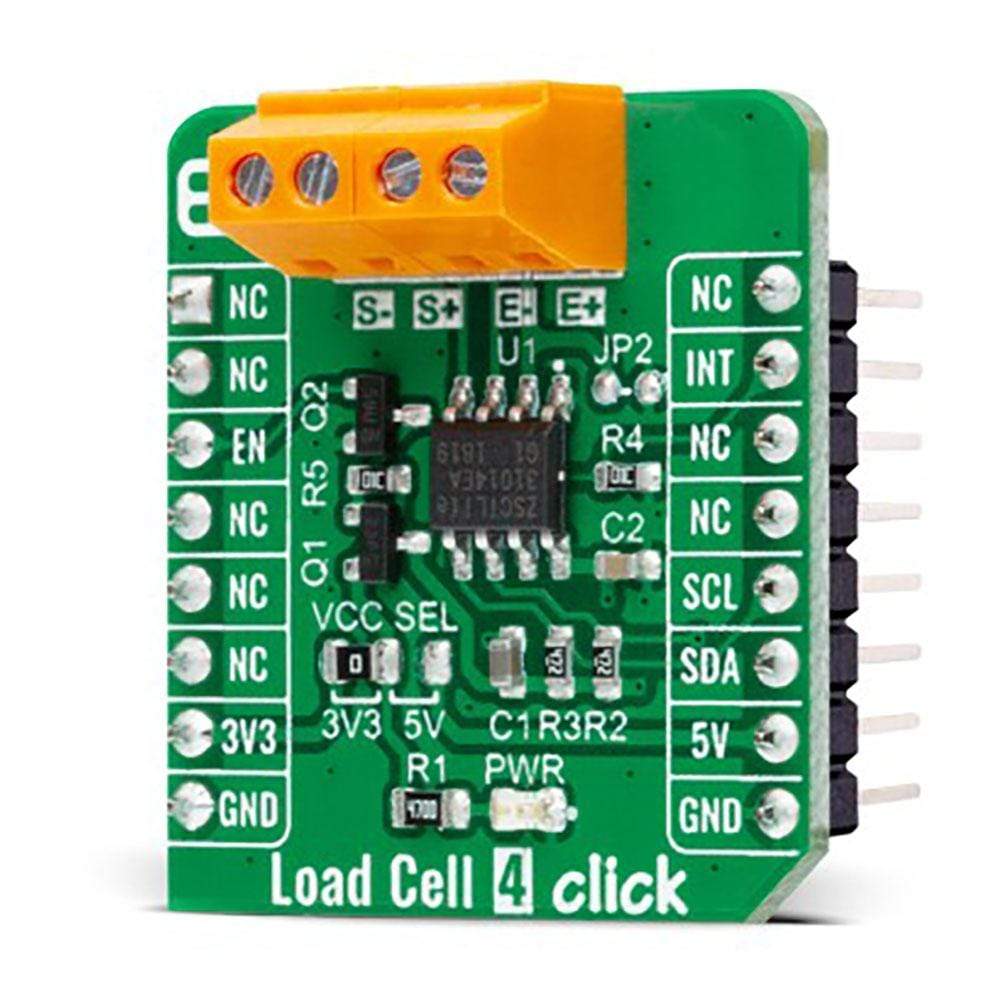
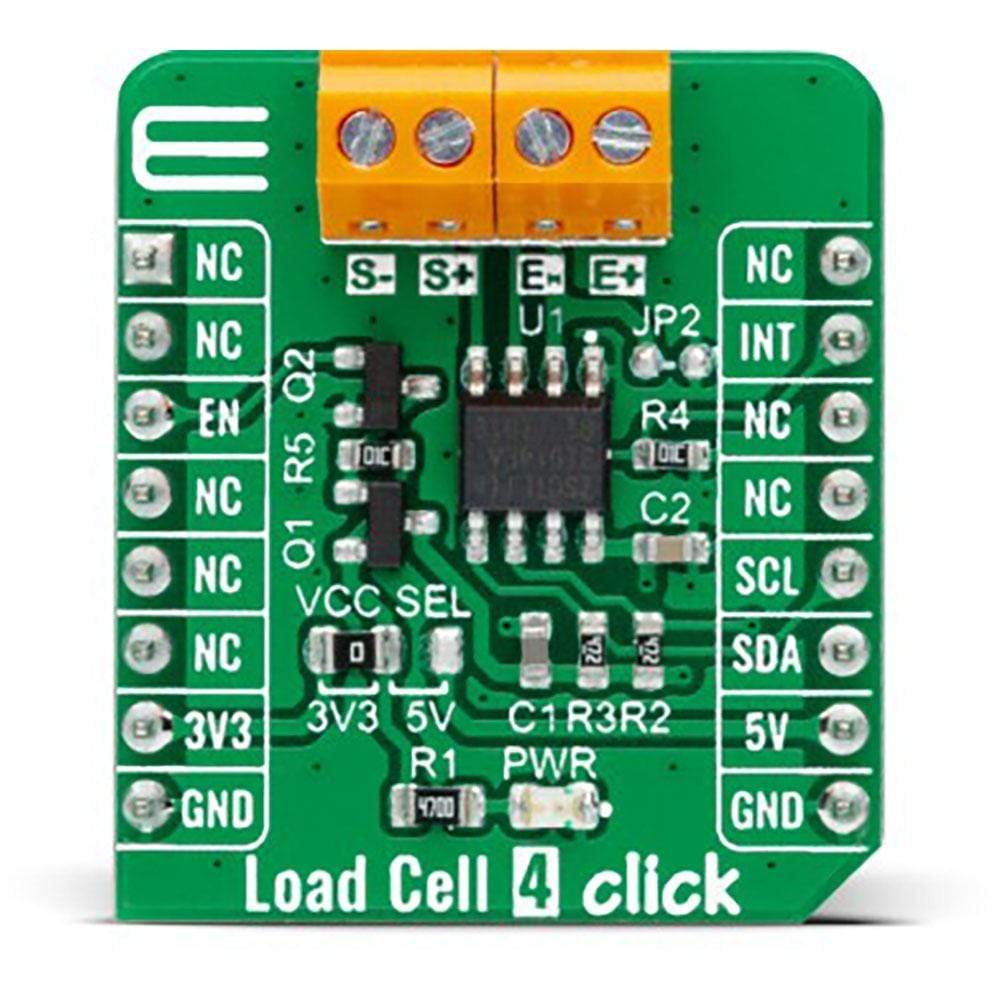
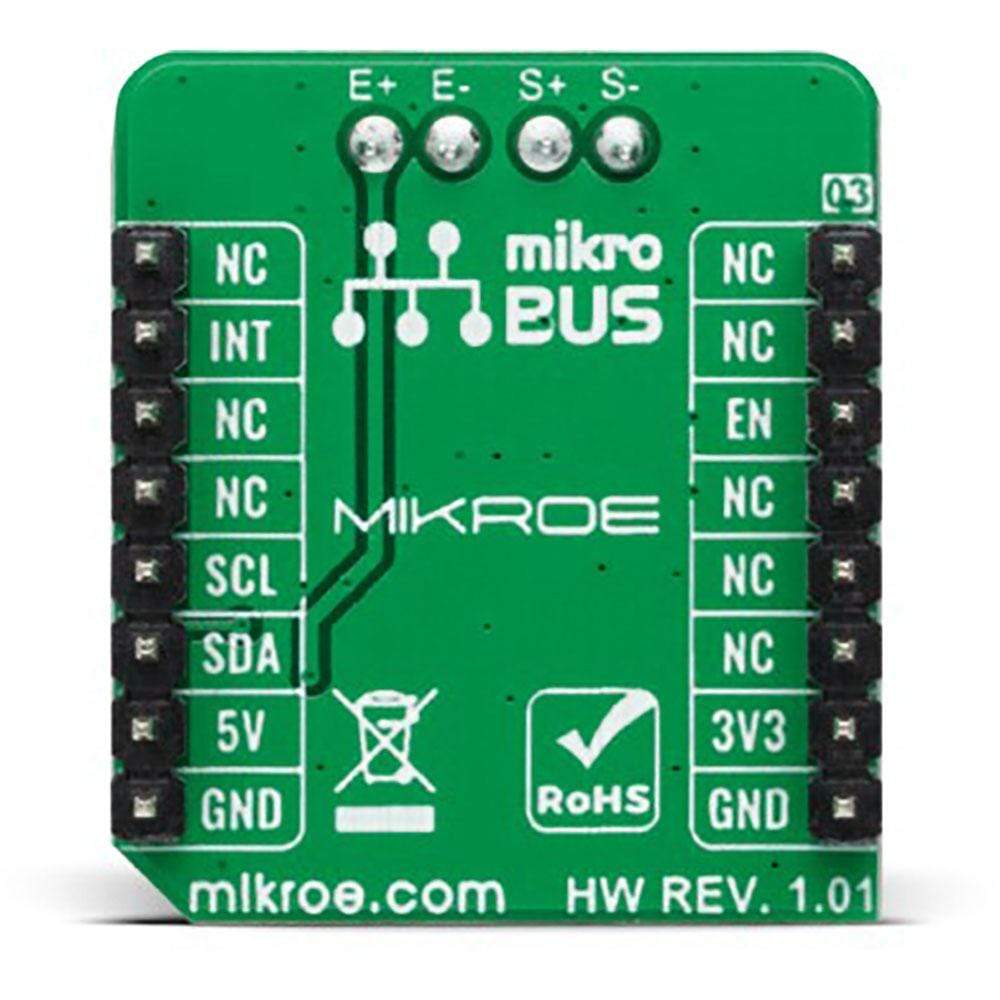
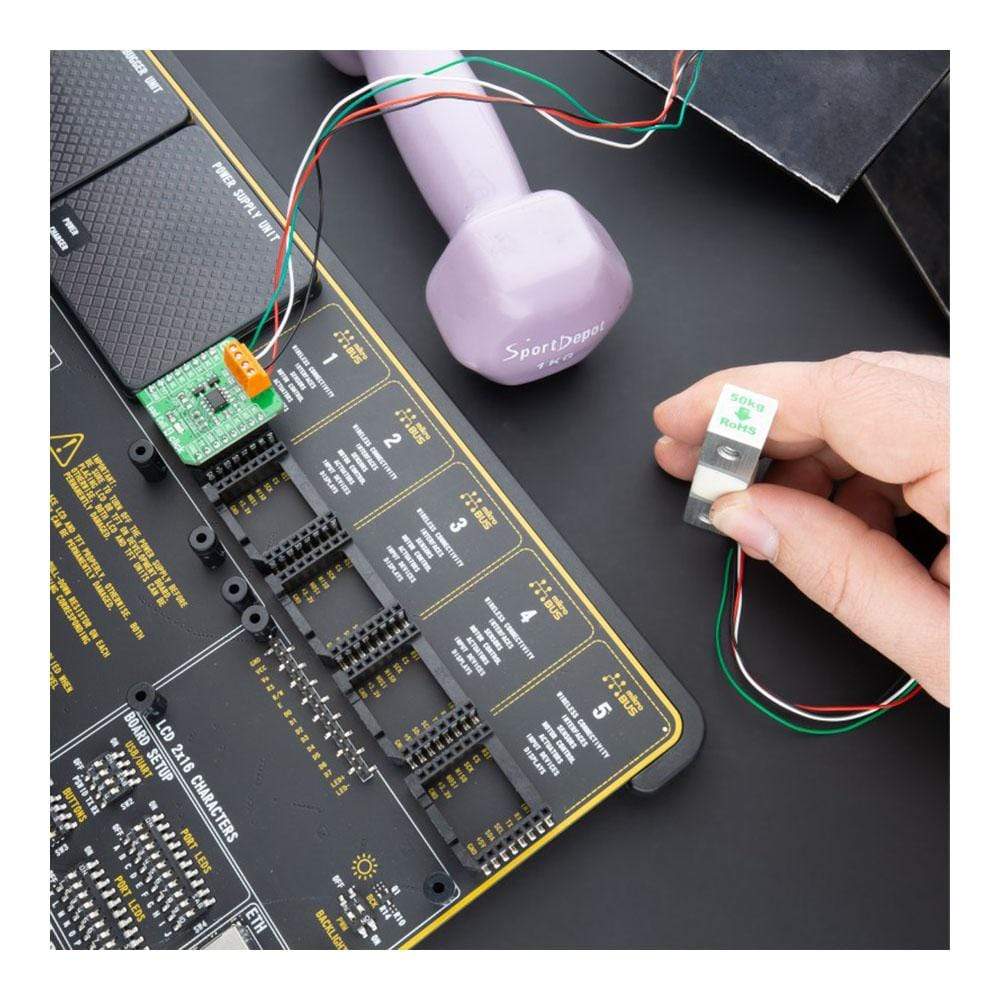
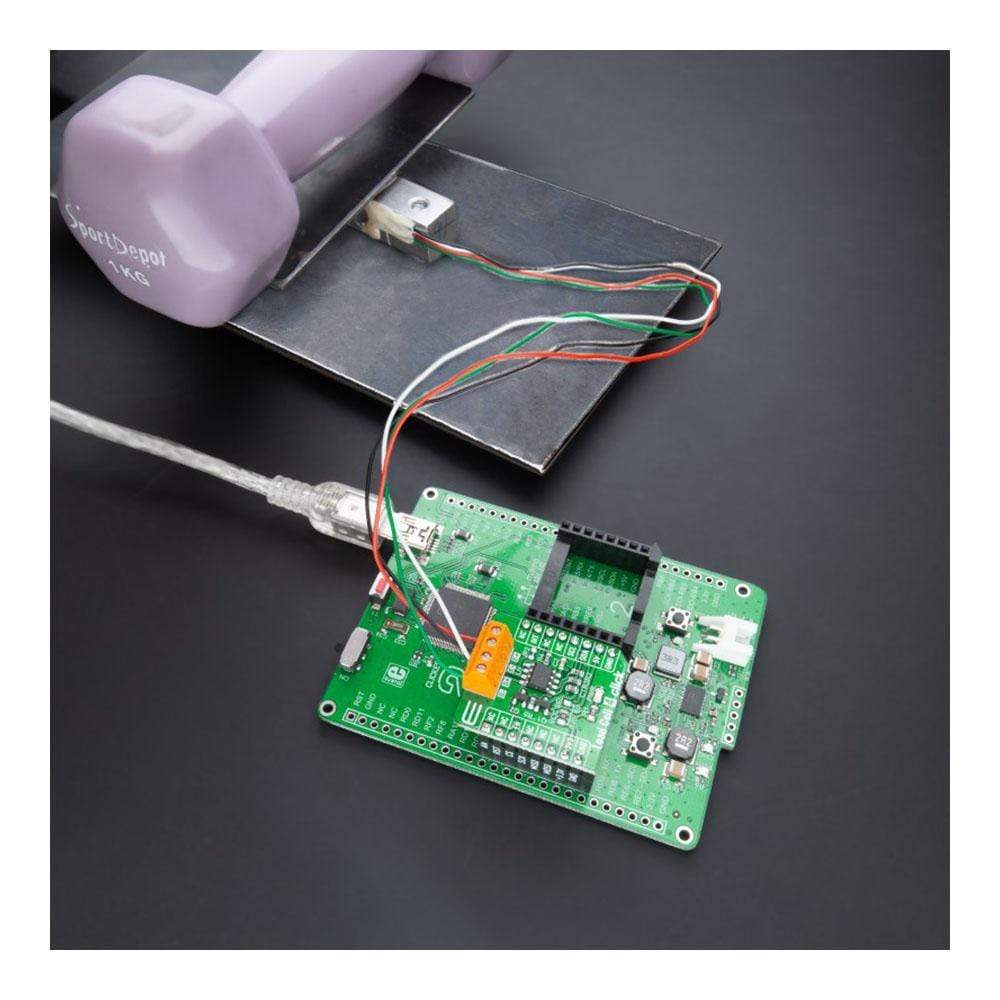
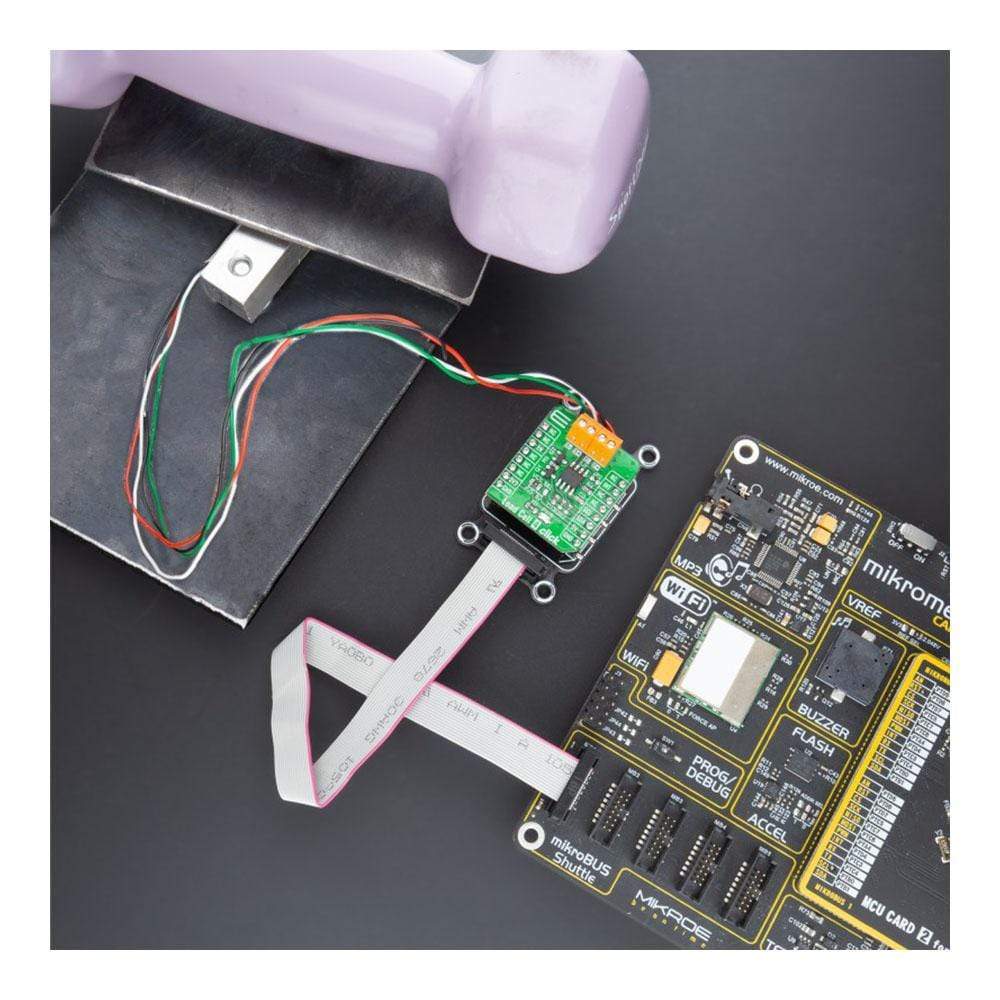
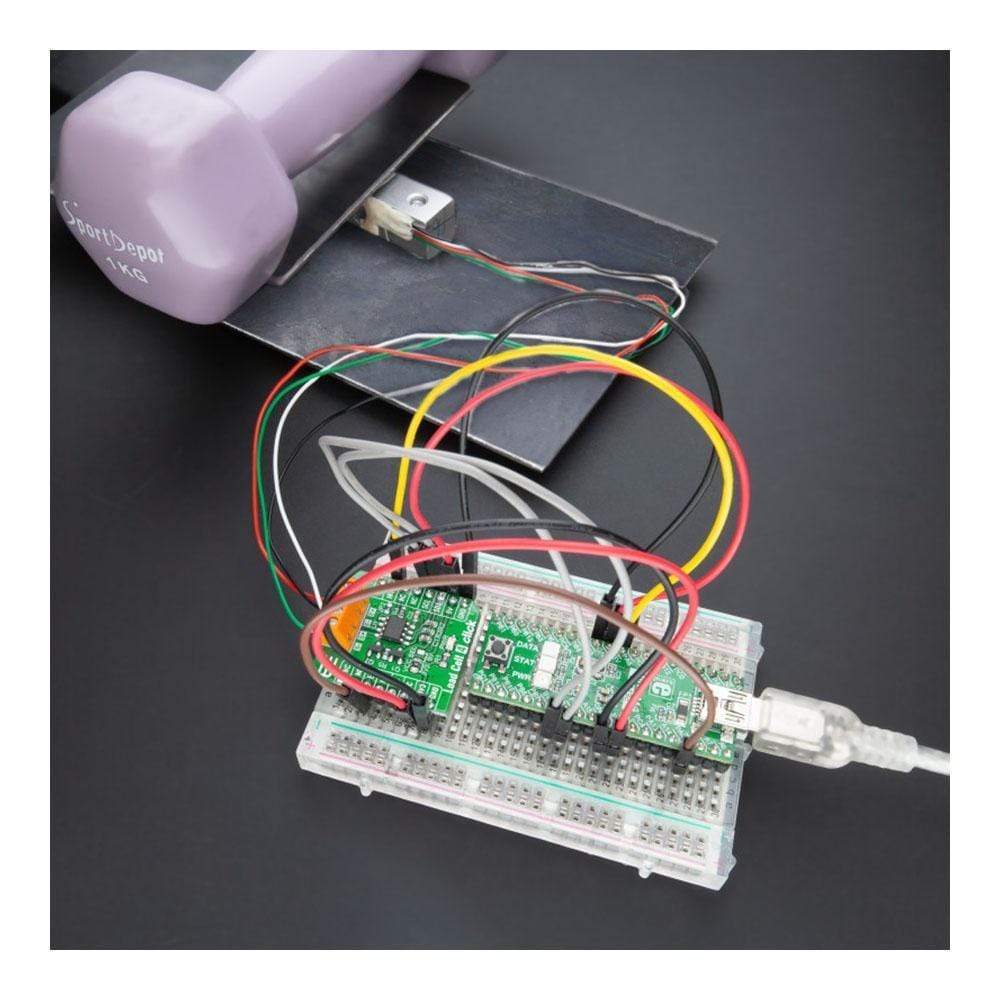
Overview
The Load Cell 4 Click Board™ is a compact add-on board that contains a resistive sensor signal conditioner with a fast power-up data output response. This board features the ZSC31014, a CMOS integrated circuit for highly accurate amplification and analogue-to-digital conversion of differential and half-bridge input signals from Renesas. This Click Board™ is well suited for sensor-specific correction of bridge sensors and adjustable to nearly all piezo-resistive bridge sensors. Digital compensation of signal offset, sensitivity, temperature drift, and non-linearity is accomplished via an internal signal processor running a correction algorithm with calibration coefficients stored in a non-volatile EEPROM.
The Load Cell 4 Click Board™ has many features that make it a perfect solution for safety-critical and weight measurement applications
Downloads
Le Cellule de charge 4 Click Board™ est une carte complémentaire compacte qui contient un conditionneur de signal de capteur résistif avec une réponse de sortie de données de mise sous tension rapide. Cette carte comprend le ZSC31014, un circuit intégré CMOS pour une amplification très précise et une conversion analogique-numérique des signaux d'entrée différentiels et demi-pont de Renesas. Cette Click Board™ est bien adaptée à la correction spécifique des capteurs de pont et est réglable sur presque tous les capteurs de pont piézorésistifs. La compensation numérique du décalage du signal, de la sensibilité, de la dérive de température et de la non-linéarité est réalisée via un processeur de signal interne exécutant un algorithme de correction avec des coefficients d'étalonnage stockés dans une EEPROM non volatile.
La cellule de charge 4 Click Board™ possède de nombreuses fonctionnalités qui en font une solution parfaite pour les applications critiques de sécurité et de mesure de poids
| General Information | |
|---|---|
Part Number (SKU) |
MIKROE-4458
|
Manufacturer |
|
| Physical and Mechanical | |
Weight |
0.017 kg
|
| Other | |
Country of Origin |
|
HS Code Customs Tariff code
|
|
EAN |
8606027381607
|
Warranty |
|
Frequently Asked Questions
Have a Question?
Be the first to ask a question about this.







